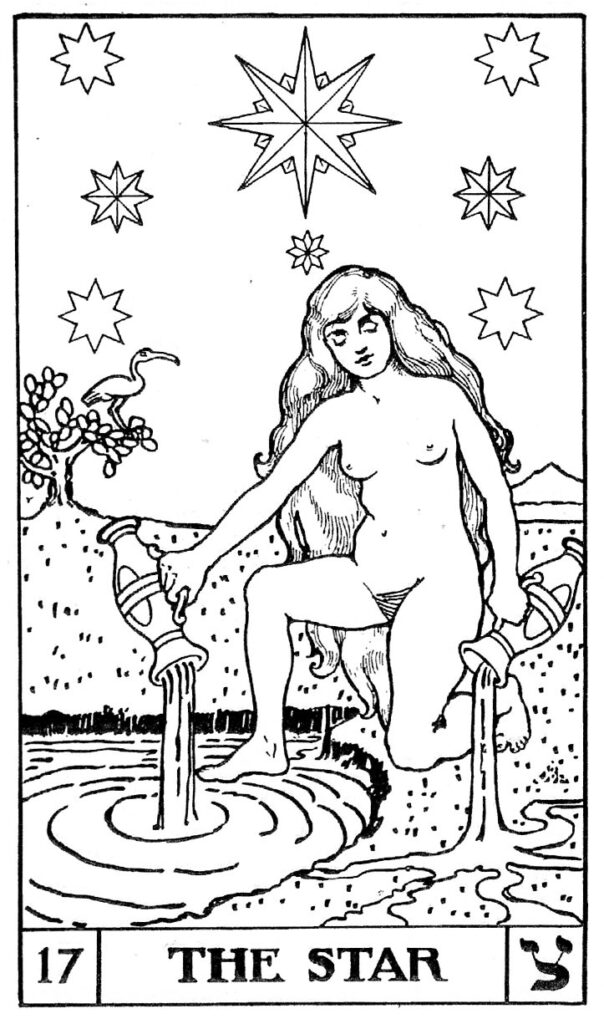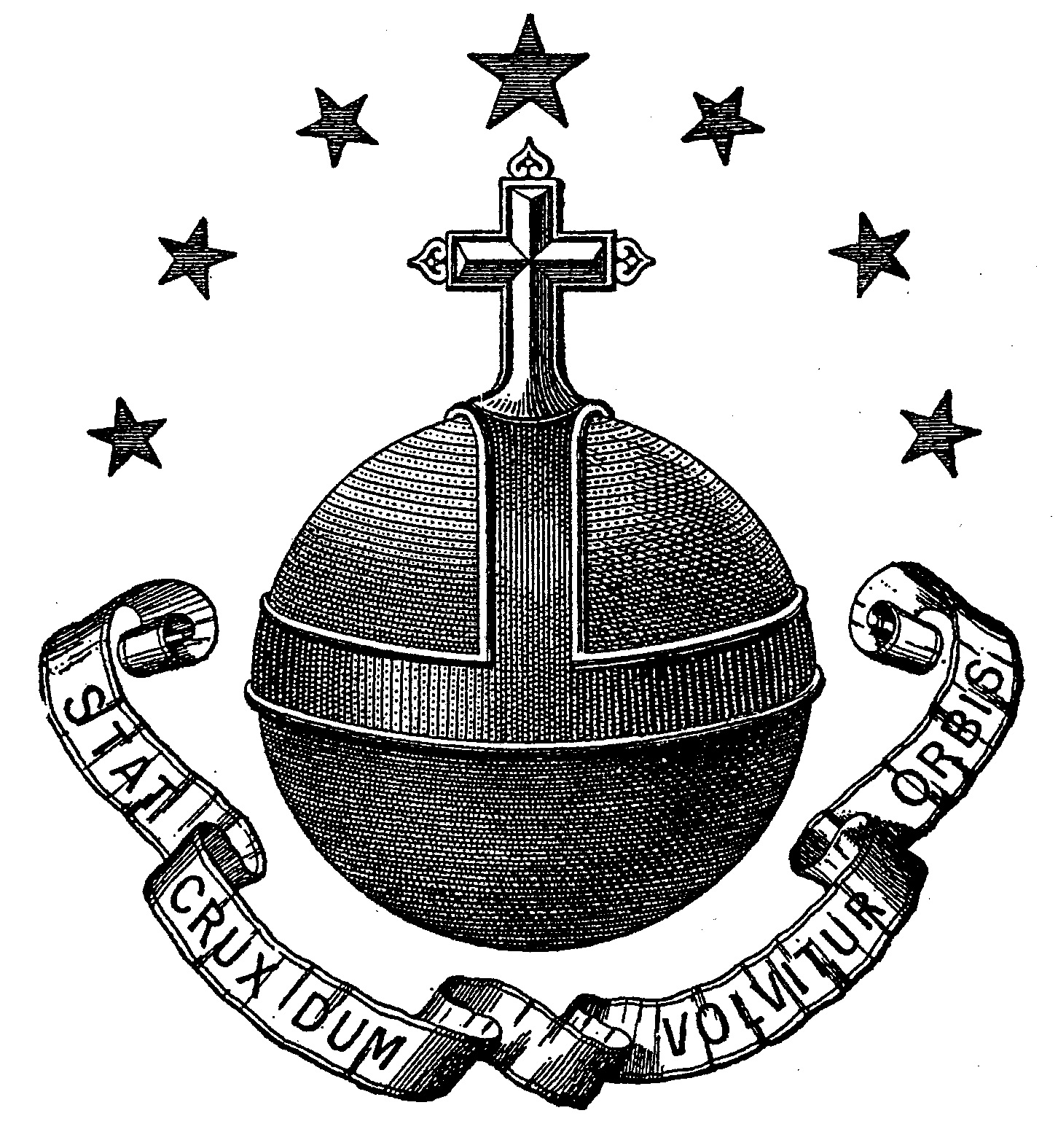Beneath the unyielding hush of the ancient cloister, a seal endures. The world turns in sleepless agitation; passions, stories, catastrophes whirl on the axis of appetite and regret. But, upon the black and silver emblem of the Carthusians, the cross stands immovable while the globe spins. Encircling the stillness: seven stars, set against the blackness like scars or sentinels. Stat Crux dum volvitur orbis. The Cross abides; the world contorts. This, handed down in disciplined silence, is more than a mark of monastic renunciation; it whispers the great formula of the interior path: how to remain faithful at the centre while the world’s machinery roars, how to keep a lamp burning beneath the shadow of time. The cloister is not an escape from matter but a sanctification of it, a geometry of vigil held between stars.
The Cartusian seal appears at thresholds; through the mouth of a sister, the intuition of a channel, the gentle hand of someone who offers the sign without trumpet or proof. The world may pass by without noticing, but, for the one marked by the invisible, the symbol shines as an oracular key, one cut in midnight. Such is the paradox: the cross stands, the globe turns, the stars keep watch, and the altar kindles itself in the heart that remembers.
I. The Seven Stars: Thresholds, Guardians, Planets
The figure of seven has haunted every sacred science; it is the measure of time, the chime of the days, the architecture of the heavens. In the old Gnostic treatises, seven are the archons – keepers of the planetary spheres -, each weaving a veil of fate, each naming a bondage. Saturn, Jupiter, Mars, Sun, Venus, Mercury, Moon: a ladder of metals, a choir of powers, a prison for the soul. The Hermetic wisdom read these not as tyrants, but as stages; every ascension is a trial, every sphere a chamber to be crossed with fire and Word.
The Carthusian seal arranges seven stars about the Cross. For those who see with the gnostic eye, this is not ornamentation. It is the diagram of the world’s labyrinth, the sevenfold veil between the altar and the unspeakable. Each star may be counted as a planetary archon, a lamp of watching, a virtue of the cloistered path: Poverty, Chastity, Silence, Vigil, Work, Study, Prayer. For each vow, a star. For each ordeal, a guardian.
The Seven is also the lampstand of the Apocalypse, the menorah of the Temple, the weeks of creation, the ladder in the vision of Jacob. No stage is skipped, no step ignored. One, like the monk, is initiated seven times: through loss, through solitude, through hunger, through wordlessness, through yearning, through patience, through surrender. To pass through the seven is to be emptied of haste and made ready for the flame that descends when the ego cracks.
II. The Cross and the World: The Centre That Endures
Stat Crux dum volvitur orbis. The world spins, with desire, terror, ideology, history. The cross does not retreat. The cross in this seal is not an emblem of mortification, but the unmoved axis, the place where Presence is anchored and the inner fire is kept alive. In the centre of the circle, amidst the seven stars, stands the intersection of vertical and horizontal; Spirit and matter, heaven and earth, word and body. One is called not to withdraw from the world, but to embody a centre that is not shaken by its noise. The Carthusian vow is discipline. It is the lamp placed in a hidden window, its light shaping the dark, refusing the agitation that consumes so many.
Seven times the world tempts the watcher to dissolve, to lose shape, to abandon the vigil. Seven times the stars mark the border between distraction and devotion. The globe spins; politics, pleasures, losses, claims to truth; all these dance around the cross, whose true substance is the fidelity that survives every season. To serve the cross, to hold the centre, is the art of the hermetic priest and the work of the hidden channel: a refusal to be moved from the altar, no matter what storms drag at the senses.
In Gnostic myth, Sophia falls through the spheres, gathering the stains of the archons, each layer dimming the memory of the Pleroma. The return is the stripping away, the recollection, the uprightness that allows the vertical beam to be restored. The cross in the Carthusian seal is Sophia’s staff, the axis mundi, the sign that there is a place in the world where the world’s voice is silenced.
III. The Ogdoad: The Eighth Who Pours
When the seven have been crossed, when the watcher has passed the trials of planet and vow, a silence gathers. The ancient Gnostics named the world beyond the seven the Ogdoad: the Eighth Realm, luminous, ineffable, the seat of the pure ones. The Ogdoad is the place of the soul restored to its source, the sphere of the Bride, where the old archons lose their grip, and a new law emerges: the law of the Star.

In the Tarot, after the Tower falls, the Star appears. She kneels, naked and unashamed, pouring water between two worlds. She is the Eighth: a flame of renewal, the signature of hope, the unfathomable peace that arrives when every fortress of the self has been torn down. She does not instruct, does not command. She offers. She is the eighth lamp, the Sophia re-ascended, in her aspect of renewal. For the Carthusian, the eighth star shines invisibly above the seal, for those who have eyes to feel it. It is the lamp that endures after the cross has been set and the vows have been uttered; it is the offering that descends when the altar is kept clean.
The Ogdoad is not flight from the world, but the redemption of it. The Eighth is not escape, but transformation; the channel who lives the seven, receives the eighth as pure gift.
Coda – Meditatio Gnostica: The Star
The altar is empty. The tower has collapsed. The world is turning, and the cross remains in shadow. One kneels, as the Star does, with hands open. The water flows from vessel to vessel, from symbol to flesh, from wound to Rose. The seven stars keep watch, circling the axis; the eighth star pours herself over the ashes. No voice is heard; only the gleam on the water and the memory of the Pleroma.
Those who come to the altar seeking comfort find only darkness. Those who endure, who watch the darkness without fleeing, begin to see the faint blue shimmer that grows from the abyss. It is the star of the Ogdoad, the Sophia returned, who pours without demand, who sees without judging, who heals without binding. The watcher recognises her through recognition. She is the final gift, the answer without question, the lamp after the tempest.
Fiat Lux.
